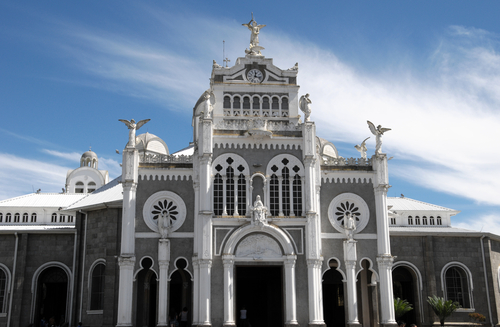Surround yourself with nature & culture in Costa Rica’s South Caribbean. Your tour begins in Costa Rica’s first & former capital city, Cartago. Admire the diverse landscape of the area as you travel to the Irazu Volcano (the highest active volcano in Costa Rica) and the Orosi Valley; enjoy some relaxation time in the natural hot springs; en route to Puerto Viejo, conquer the Pacuare River rapids; and stop to visit a local village. Once in Puerto Viejo, soak in the sun on the nearby white-sand beaches and make visits to local indigenous villages to learn about their culture, lifestyle, and beliefs.
PACKAGE INCLUDES:
- 3 nights in Cartago
- 3 nights in Puerto Viejo
- 1 night in San José
- Private transfer in and out from airport
- Shuttle transportation between destinations
- English speaking guide during activities
- Entrance fee and visit of Irazú Volcano National Park
- Visit of Orosi Valley
- Natural Hot Springs in Tapantí
- Rafting in Pacuare River
- Visit of Indigenous Territory
- Daily breakfast
- Local taxes
PACKAGE EXCLUDES:
- Optional tours
- Departure taxes from Costa Rica
- Meals not mentioned in the itinerary
- Airfare
- Tips
| City | Hotel | Room |
| Cartago | Hotel Grandpas | Standard |
| Puerto Viejo | Hotel Cariblue | Standard |
| San José | Country Inn and Suites | Standard |
| Price |
| $1045 in double occupancy |
| $935 in triple occupancy |
PASSPORTS
To enter Costa Rica, a passport must be valid on arrival; to be on the safe side visitors should have at least six months left on it, plus plenty of spare pages.
VISITOR VISAS
Visas are not required for stays of up to 90 days.
CURRENCY
Costa Rican Colón (CRC; symbol ₡) = 100 céntimos.
TRAVELLERS CHEQUES & CREDIT CARDS
Although travellers can avoid additional exchange rate charges by taking traveller’s cheques in US dollars, fewer and fewer businesses in Costa Rica are willing to accept them, and it is better to use the ATM.
LANGUAGE
Spanish is the official language and this is what is primarily spoken. English is fairly widely spoken also. Within different indigenous communities, a variety of indigenous languages are used.
WEATHER
In the Central Valley, where the main centres of population are located, the average temperature is 22°C (72°F) and the region enjoys a spring-like climate year round. In the coastal areas, the temperature is much hotter and humid, while the Pacific Northwest can be extremely hot and dry. The rainy season starts in May and finishes in November, although there are distinct regional variations. June and July are the wettest months, particularly on the Caribbean side, but the season can run from May until December.
PREFERRED CLOTHING
Lightweight cottons and linens most of the year, warmer clothes for cooler evenings. Waterproofing is necessary during the rainy season. Loose-fitting clothing is best. Wear neutral browns and greens for birding and wildlife viewing. Always bring mosquito repellent for both day and night.
TAXIS
Taxis are numerous and inexpensive in San José. The taxis are coloured red (except those serving the Juan Santamaría International Airport, which are orange). Taxis are usually metered, but few drivers use the meters as they figure they can extract more money from tourists by not doing so. Make sure they put it on and that it hasn’t already been running, or ask your hotel concierge how much a fare should be, and negotiate with the driver to an agreed amount before setting off.
ELECTRICITY
Electricity supply is 110 volts, 60 cycles.
INTERNET
There are internet cafés throughout the country, and most tourist hotels also provide facilities such as Wi-Fi.
MOBILE PHONES
Roaming agreements exist with international mobile phone companies. Coverage is good.
MEDICAL FACILITIES
Both public and private hospitals are available but tourists may only use the publicly-run healthcare service known as Caja Costarricense de Seguro Social (CCSS) in genuine emergencies. Private treatment is on the whole, of good quality and much lower cost than equivalent services in the US. Most doctors will expect payment in cash. Tourists visiting Costa Rica are recommended to take out health insurance before travelling.
FOOD & DRINKS
Restaurants in coastal towns and larger cities serve a variety of foods – you’ll find everything from Argentinian steaks to Middle Eastern food. Expect to see Chinese, French, Italian, Mexican and North American joints selling food that can range from satisfactory to sublime.
TIPPING
Tipping is not necessary but is acceptable if the service was particularly outstanding; no more than 10% though. Restaurants add a 13% sales tax plus a 10% service charge to the bill.












